|
The Liturgical YearThe cycle of time for us involves a variety of seasons of the Liturgical Year:
Advent, Christmas/Epiphany, Lent, Eastertime, and Ordinary Time.
Through these seasons, the liturgy emphasizes different aspects of the
paschal mystery, the death and Resurrection of Christ the Lord.
Here are some customs that pertain to San Rocco Oratory, for the
Liturgical Year:
Advent 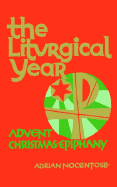 The season of Advent
("coming") emphasizes the return of Jesus Christ, the Second Coming,
when he takes up his reign as Messiah, as Christ the King. We
think especially of the end of the world, the saints in glory, the
faithful departed, the resurrection of the dead, justice and
judgment, peace on the earth, thanksgiving, and the dominion
of the Lord Jesus Christ. This is also a season that celebrates
Mary, the Mother of Christ, for example, in the Feast of the Immaculate
Conception and the Feast of Our Lady of Guadalupe, as well as the
Sundays of December. The season of Advent
("coming") emphasizes the return of Jesus Christ, the Second Coming,
when he takes up his reign as Messiah, as Christ the King. We
think especially of the end of the world, the saints in glory, the
faithful departed, the resurrection of the dead, justice and
judgment, peace on the earth, thanksgiving, and the dominion
of the Lord Jesus Christ. This is also a season that celebrates
Mary, the Mother of Christ, for example, in the Feast of the Immaculate
Conception and the Feast of Our Lady of Guadalupe, as well as the
Sundays of December.
In fact,
these same themes are found in the liturgy not just with the First
Sunday of Advent, around December 1, but as early as November 1, the
Feast of All Saints. This period in the liturgy, then, includes
most of the months of November and December, covered by a single
issue in the Leaflet Missal, used in the pews. During
Advent, the Gloria is not used; it is simply omitted, from the First
Sunday of Advent on. We use the color purple in the sanctuary
cloths, on the altar and the Gospel Book stand, as well as in the
vestments of the priest. 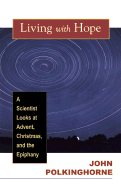 Because Advent is a time of joyful hope,
not penance, we continue to use the organ at Mass and to sing Alleluia
before the Gospel. Favorite songs include All Glory, Praise,
and Honor, Father, Make Your Mercy Known, He Is Coming, I Lift My Soul, O
Come, O Come, Emmanuel, How Great Is God (Magnificat), Jesus Shall
Reign, On Jordan's Bank, Rejoice, the Lord Is near, Sing of Mary, The
Lord Lives in Light, The Mountains Will Sing, To Christ the
King, and other such songs. At San Rocco, before the First
Reading, the choir sings the Trisagion.
During the preparation of gifts, the choir and people sing We Look for
Light. We do not sing Christmas carols during Advent, at all,
because they are not appropriate during this time. The themes of
Advent are different from those of Christmas, as are the songs. Because Advent is a time of joyful hope,
not penance, we continue to use the organ at Mass and to sing Alleluia
before the Gospel. Favorite songs include All Glory, Praise,
and Honor, Father, Make Your Mercy Known, He Is Coming, I Lift My Soul, O
Come, O Come, Emmanuel, How Great Is God (Magnificat), Jesus Shall
Reign, On Jordan's Bank, Rejoice, the Lord Is near, Sing of Mary, The
Lord Lives in Light, The Mountains Will Sing, To Christ the
King, and other such songs. At San Rocco, before the First
Reading, the choir sings the Trisagion.
During the preparation of gifts, the choir and people sing We Look for
Light. We do not sing Christmas carols during Advent, at all,
because they are not appropriate during this time. The themes of
Advent are different from those of Christmas, as are the songs.
(There
is certainly popular pressure to start singing Christmas carols, right
after Thanksgiving, since that's what you hear on TV and in the shopping
malls and everywhere else. This pressure has to be resisted
stoutly, in order to help us focus on the themes of Advent, in accord
with the liturgy.)
Christmas/Epiphany 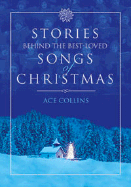 This season begins with the Vigil of Christmas and continues through Holy Family Sunday, Epiphany, and the Baptism of Christ. Only now are Christmas carols
sung, and we continue to sing them up to and including the Baptism of
Christ. The color of the vestments is white or gold. Incense
may be used at Mass, especially on Christmas and Epiphany. The
Gloria is sung, once again, now that Advent is over; the version we use
has the same refrain as Angels We Have Heard on High. This season begins with the Vigil of Christmas and continues through Holy Family Sunday, Epiphany, and the Baptism of Christ. Only now are Christmas carols
sung, and we continue to sing them up to and including the Baptism of
Christ. The color of the vestments is white or gold. Incense
may be used at Mass, especially on Christmas and Epiphany. The
Gloria is sung, once again, now that Advent is over; the version we use
has the same refrain as Angels We Have Heard on High.
For the Kyrie, the Sanctus and the Agnus Dei, we use the music from Gregorian Chant Mass VIII, the Missa de Angelis.
Lent 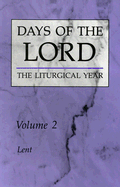 The
season of Lent begins on Ash Wednesday, when people come to church to
get ashes. It is not a holyday, but we usually have a full church
nonetheless. Ash Wednesday, like Good Friday, is traditionally a
day of fast (no food or at least no eating between meals) and abstinence
(no meat). So, on this day, we celebrate a Liturgy of the Word,
not the Mass. For the General Intercessions, the Prayer of the Faithful,
the people kneel down and remain kneeling. The
season of Lent begins on Ash Wednesday, when people come to church to
get ashes. It is not a holyday, but we usually have a full church
nonetheless. Ash Wednesday, like Good Friday, is traditionally a
day of fast (no food or at least no eating between meals) and abstinence
(no meat). So, on this day, we celebrate a Liturgy of the Word,
not the Mass. For the General Intercessions, the Prayer of the Faithful,
the people kneel down and remain kneeling.
Probably many of us understand that during Lent we do personal meditation. Especially towards the end of Lent, we focus on the suffering of Jesus Christ,
his Passion and death. What is new for many of us is the teaching
of the Second Vatican Council that during Lent we should also prepare for baptism at
Easter; we should reflect on what it means to renew our faith, to
welcome newcomers, and to belong to the Church. Such hymns
as High Praise, River of Glory, and Your Reign, O God, reflect
these Lenten themes. 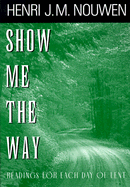 The
organ is silent during Lent, even on Sundays, unless it is
necessary. So far, the people sing very well, and it has almost
never been needed. Avoiding use of the organ, according to our
tradition, sets the singing apart during this season. Our voices, a
cappella, have to support one another; the liturgy seems more somber
and solemn. As preserved in the Eastern Churches, singing without
instrumental accompaniment is our tradition now only during Lent and
during funerals. It is a good tradition, because the experience is
good, setting these times aside as special. The
organ is silent during Lent, even on Sundays, unless it is
necessary. So far, the people sing very well, and it has almost
never been needed. Avoiding use of the organ, according to our
tradition, sets the singing apart during this season. Our voices, a
cappella, have to support one another; the liturgy seems more somber
and solemn. As preserved in the Eastern Churches, singing without
instrumental accompaniment is our tradition now only during Lent and
during funerals. It is a good tradition, because the experience is
good, setting these times aside as special.
Both
the Gloria and the Alleluia are not used during Lent. Neither are songs
with the word Alleluia. Favorite songs during Lent include
Giver of the Perfect Gift, God Forbid that I Should Boast, God, Giver of
the Signs of Grace, O Lord, I Am Not Worthy, Out of the Depths, The
Lord Lives in Light, Throughout These Days, What Wondrous Love,
and other such songs. At San Rocco, during Lent, before the First Reading, the choir sings the Trisagion. During the preparation of the gifts, the choir and people sing Lord, Have Mercy on Us. For
the Prayer of the Faithful, the General Intercessions, during Lent, we
do not use the usual, four-part music for Lord, we beg you, hear our
prayer. Instead, the unison music is used, the same as used for
the Kyrie, during most of the year and at funerals. At weekday
Masses and other liturgies, Monday through Saturday, the people kneel
down for the General Intercessions. 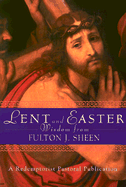 At
San Rocco, during Lent, as recommended, we use the Apostles' Creed
every Sunday; we sing it from the Leaflet Missal, in the musical setting
provided therein. At
San Rocco, during Lent, as recommended, we use the Apostles' Creed
every Sunday; we sing it from the Leaflet Missal, in the musical setting
provided therein.
Lent ends with the Wednesday after Passion Sunday. Note that Passion
Sunday is part and parcel of the Lenten season. The Leaflet Missal
for Lent goes from Ash Wednesday to the Wednesday after Passion Sunday,
covering the entire season.
Eastertime 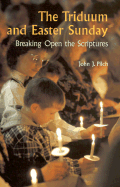 With the evening Mass of Holy Thursday, Lent is over. The Gloria is sung. Now, we begin the sacred Triduum,
the three days that commemorate the paschal mystery in a special
way. On Good Friday, a day of fast and abstinence, the Mass
is not celebrated. Instead, as on Ash Wednesday, we just
have a Liturgy of the Word. During the solemn prayers, it is
fitting for the people to kneel down and to remain kneeling.
Afterwards, the cross is venerated, while the people sing My
People, My People. With the evening Mass of Holy Thursday, Lent is over. The Gloria is sung. Now, we begin the sacred Triduum,
the three days that commemorate the paschal mystery in a special
way. On Good Friday, a day of fast and abstinence, the Mass
is not celebrated. Instead, as on Ash Wednesday, we just
have a Liturgy of the Word. During the solemn prayers, it is
fitting for the people to kneel down and to remain kneeling.
Afterwards, the cross is venerated, while the people sing My
People, My People.
Easter Sunday
and on Pentecost, a special hymn (a "Sequence") is sung after the
Second Reading, before the Alleluia. These are, respectively,
Christ the Lord Is Risen Today and Come, O Holy Spirit,
Come. A sequence is not required on other Sundays. Again,
during the Easter Season, as recommended, we use the Apostles'
Creed every Sunday, using the music provided in the Leaflet
Missal. For the Sanctus
and the Agnus Dei, as during Christmastime, we again sing the
music from Mass VIII, the Missa de Angelis. During this
season of Easter, we also sing the Kyrie and the Gloria from this Mass,
in Greek and Latin, respectively. For the Kyrie, the choir
sings the invocations; the people respond. Favorite
songs include Alleluia! Christ Has Risen, Alleluia!
Jesus Is Lord, At the Lamb's High Feast, Christ Has Risen from
the Dead, Christ the Lord Today Is Risen, Holy Father, Hymn of
Joy, River of Glory, Sunday Morning, That Easter Day, and You
Christians All. The latter is especially effective during
Communion, since it has the simple refrain, Alleluia, sung three
times. The color of the
vestments is white or gold. Incense may be used, especially on
Easter Sunday and Pentecost Sunday. As on Sundays throughout the
year, so too now, in the fifty days of Eastertime, we stand together during the liturgy, as a reminder and a sign of the Resurrection of Jesus Christ.
Ordinary Time 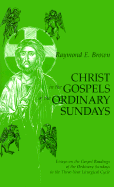 This season actually covers half the Sundays in the year. Regularly, the First Readings each week are related to the Gospels,
usually as "typology"; the Old Testament is used as prefiguring the New
Testament. The color of the vestments is green, and the liturgy
is somewhat more reserved than in other seasons. For example, we
usually recite both the Gloria and the Creed. This season actually covers half the Sundays in the year. Regularly, the First Readings each week are related to the Gospels,
usually as "typology"; the Old Testament is used as prefiguring the New
Testament. The color of the vestments is green, and the liturgy
is somewhat more reserved than in other seasons. For example, we
usually recite both the Gloria and the Creed.
|
|
|
|



 The season of
The season of  Because Advent is a time of
Because Advent is a time of  This season begins with the Vigil of Christmas and continues through Holy Family Sunday, Epiphany, and the Baptism of Christ. Only now are
This season begins with the Vigil of Christmas and continues through Holy Family Sunday, Epiphany, and the Baptism of Christ. Only now are  The
season of Lent begins on Ash Wednesday, when people come to church to
get ashes. It is not a holyday, but we usually have a full church
nonetheless. Ash Wednesday, like Good Friday, is traditionally a
day of fast (no food or at least no eating between meals) and abstinence
(no meat). So, on this day, we celebrate a Liturgy of the Word,
not the Mass. For the General Intercessions, the Prayer of the Faithful,
the people kneel down and remain kneeling.
The
season of Lent begins on Ash Wednesday, when people come to church to
get ashes. It is not a holyday, but we usually have a full church
nonetheless. Ash Wednesday, like Good Friday, is traditionally a
day of fast (no food or at least no eating between meals) and abstinence
(no meat). So, on this day, we celebrate a Liturgy of the Word,
not the Mass. For the General Intercessions, the Prayer of the Faithful,
the people kneel down and remain kneeling. The
organ is silent during Lent, even on Sundays, unless it is
necessary. So far, the people sing very well, and it has almost
never been needed. Avoiding use of the organ, according to our
tradition, sets the singing apart during this season. Our voices, a
cappella, have to support one another; the liturgy seems more somber
and solemn. As preserved in the Eastern Churches, singing without
instrumental accompaniment is our tradition now only during Lent and
during funerals. It is a good tradition, because the experience is
good, setting these times aside as special.
The
organ is silent during Lent, even on Sundays, unless it is
necessary. So far, the people sing very well, and it has almost
never been needed. Avoiding use of the organ, according to our
tradition, sets the singing apart during this season. Our voices, a
cappella, have to support one another; the liturgy seems more somber
and solemn. As preserved in the Eastern Churches, singing without
instrumental accompaniment is our tradition now only during Lent and
during funerals. It is a good tradition, because the experience is
good, setting these times aside as special.  At
San Rocco, during Lent, as recommended, we use the Apostles' Creed
every Sunday; we sing it from the Leaflet Missal, in the musical setting
provided therein.
At
San Rocco, during Lent, as recommended, we use the Apostles' Creed
every Sunday; we sing it from the Leaflet Missal, in the musical setting
provided therein. With the evening Mass of Holy Thursday, Lent is over. The Gloria is sung. Now, we begin the sacred
With the evening Mass of Holy Thursday, Lent is over. The Gloria is sung. Now, we begin the sacred  This season actually covers half the Sundays in the year. Regularly, the First Readings each week are related to the
This season actually covers half the Sundays in the year. Regularly, the First Readings each week are related to the  top
top